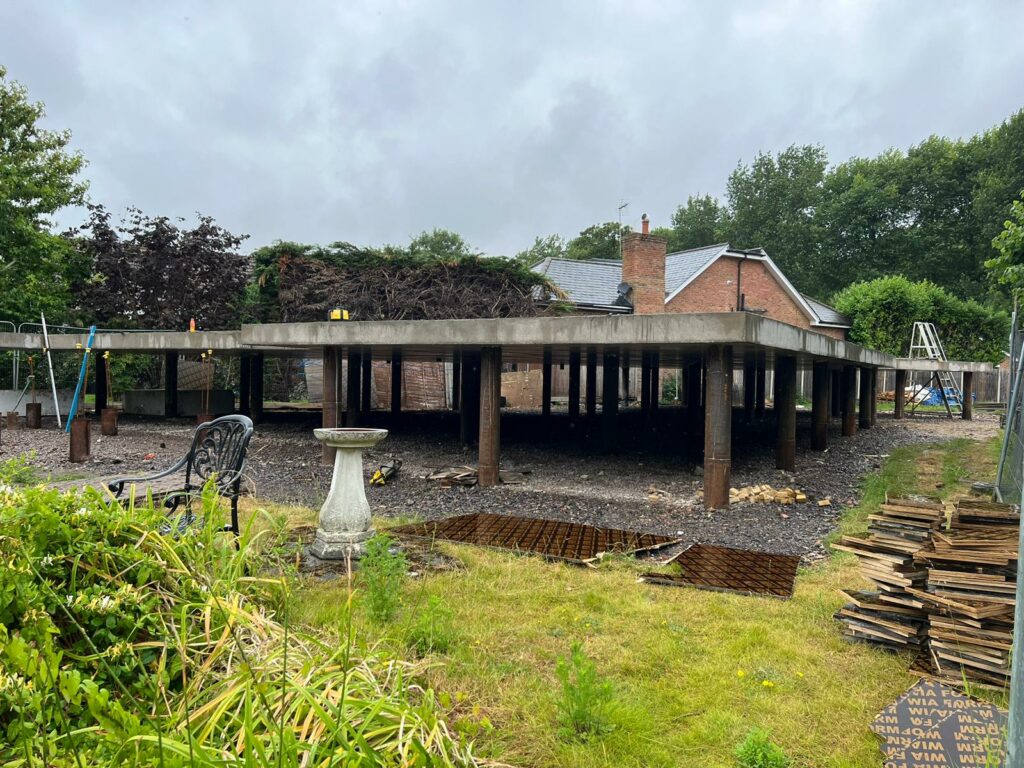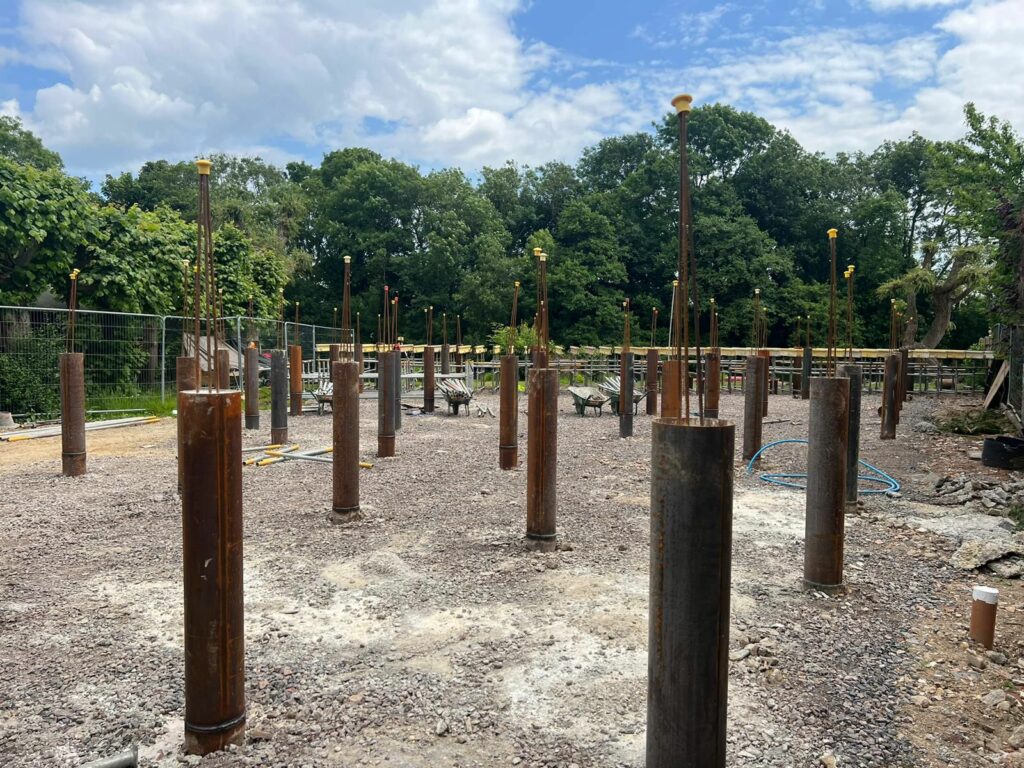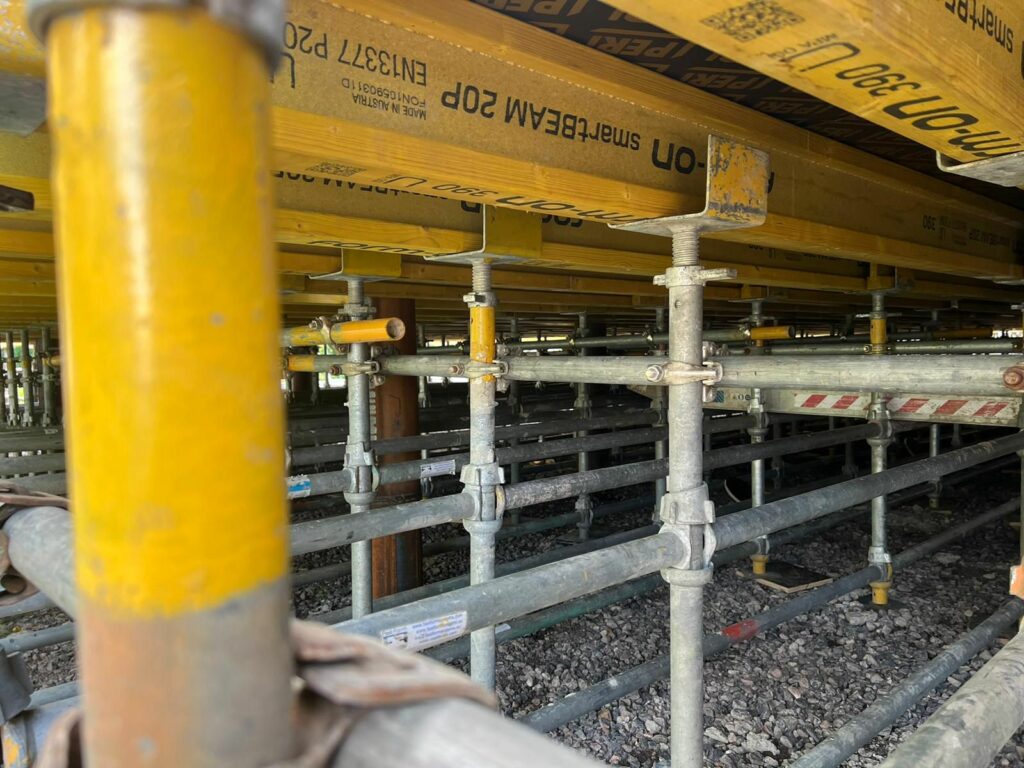No need to worry about flooding, for the owners of the new dwelling built upon this raised slab in Shepperton.

We spend a lot of time lifting buildings to reduce or eliminate the risk of flooding. With this project, an advantage over the flood waters is engineered into the build right from the start. Once built upon the new raised slab, the new dwelling will be ‘sitting pretty’, far above any predicted flood waters.
We repair, lift, design and build foundations all around the UK, but often find ourselves not too far away from the River Thames. Usually, we are in the areas surrounding the Thames to lift buildings to raise them above the floods. This time, we were in Shepperton, to design and construct a brand new raised slab.
A foundation such as this has two main parts. The piles, driven into the ground to provide support, and the concrete slab on top.
Although fairly simple to look at once completed, our Engineer (Jonathan) puts his skills and knowledge to the test when designing such a construction. There are inherent issues with such a build, with the piles’ tendency to ‘punch through’ the concrete, being close to the top of the list. We are lucky to have Jonathan’s skills and experience to fall back on with these projects. It’s reassuring to know (for us and the client), problems that could occur on such builds, wont. At Morcon, we spend a lot of time fixing foundations built by other companies, never our own.

The piles above are 219mm steel cased. They were driven into the ground between 7 and 9 metres deep and then filled with concrete (and steel reinforcement). For anyone interested in technical details, the use of the piles was calculated using the ‘Hiley’ Formula, and was designed to BS8004. The piles were driven to refusal to achieve a specific end bearing capacity, and a pile safety factor of 3.0 was used. The safe working load of each pile is calculated to be 190 kN (end bearing and skin friction design).

Once the piles are set, it’s time to build the raised full soffit formwork, into which the concrete can be poured. You can see in the above photo that the steel reinforcement in the piles come up into the shuttering and intertwines with the steel reinforcement for the slab. When the concrete is poured, the slab and piles become one single, massively strong and rigid structure.

Pouring a concrete slab of this size involves some pretty impressive quantities of materials; as well as huge volumes and weights of concrete itself. We use Form-On Smart Beams that are made specifically for the task. It is incredibly important for us to know that materials used to create such formwork are incredibly strong and safe, and also dimensionally stable.
Once poured, the slab itself is 250mm thick. There is a maximum span between piles of 4m, ensuring every part of the slab is adequately supported. Ancon punching shear reinforcement was also installed in several locations to provide additional protection from punching forces. Again, for anyone with an interest in technical details, the slab was designed to BS8110 as a 2-way continuous slab, and the serviceability calculations followed BS8110 part 2, section 3.
Our home lifting / raising service is often thought of as the ultimate flood defence. However, pre-empting floods and building at height goes one step further.
If you have a need for a raised concrete slab, or a need for any type of foundation repair or construction, anywhere in the UK, give us a call or fill in the contact form. You can speak to our MD (Darren) or our Engineer (Jonathan); we don’t employ a sales team.
